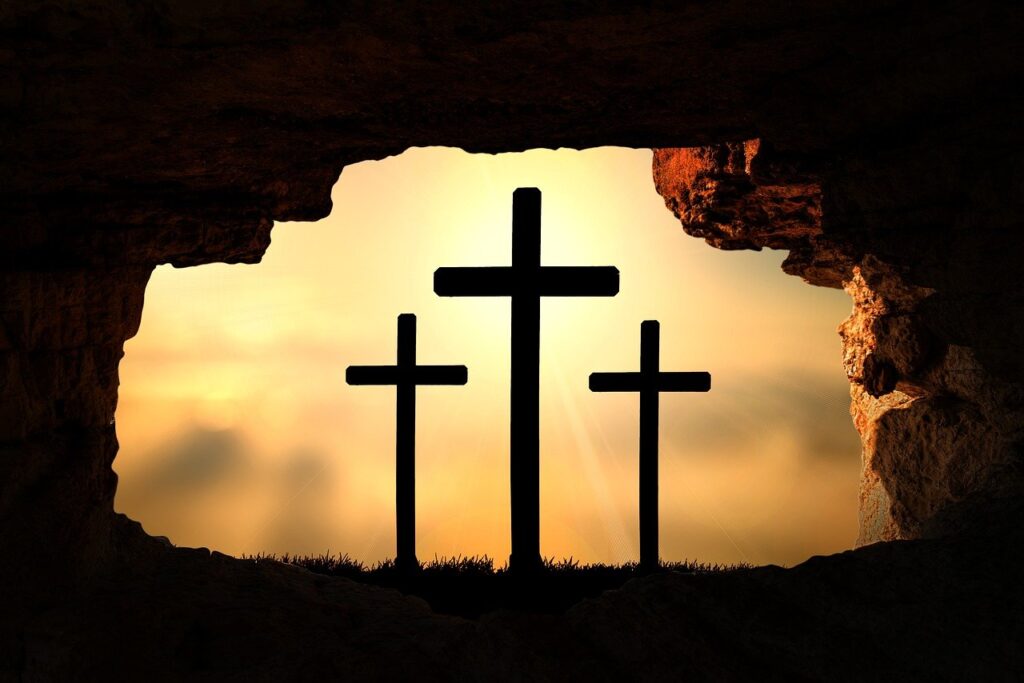The tension has been building. For three years Jesus has taught and performed miracles, creating controversy as he goes. Who is this man?
Early in Mark’s gospel Jesus indirectly made the connection between his arrival on the scene and the arrival of the kingdom of God. At other points Mark also linked him to King David (Mk 2:25; 10:47-48; 11:10; 12:35-3), and his Palm Sunday entry into Jerusalem suggested his royal status by riding on an animal with his path being covered with branches.
Finally, all these hints and suggestions dramatically come together in high relief as Jesus is, for the first time, explicitly named king six times in Mark 15.
15:2 “Are you the king of the Jews?” asked Pilate.
15:9 “Do you want me to release to you the king of the Jews?” asked Pilate,
15:12 “What shall I do, then, with the one you call the king of the Jews?” Pilate asked them.
15:18 And they began to call out to him, “Hail, king of the Jews!”
15:26 The written notice of the charge against him read: THE KING OF THE JEWS.
15:32 “Let this Messiah, this king of Israel, come down now from the cross, that we may see and believe.”

The Romans and the Jews who throughout have been struggling with what to make of Jesus, now, ironically, converge on this title. Why does Mark highlight Jesus as a royal ruler just when he is being arrested, rejected, condemned, mocked, flogged, and killed? Where is the triumph and glory in that?
As Jesus told his disciples who wanted to have the honor to be at his left and right hand, suffering is the path to glory (Mk 10:37-40). Though it appears completely contrary to common sense, Jesus defeats his enemies by dying.
He shows himself to be the victorious king by trouncing his foes at the cross where he is lifted up and enthroned as king. By dying he exposed for all to see how dark and impotent were the powers of sin and death arrayed against him. At the cross those powers were unmasked, exhausted, abolished, and destroyed in their futile attempt to extinguish the King of Life.
By bringing the cross and kingship together forcefully in chapter 15, Mark is telling us that these are not two opposing aspects of Jesus. The Messiah-King and Suffering Servant are one and the same.
—
Image by Gerd Altmann from Pixabay
